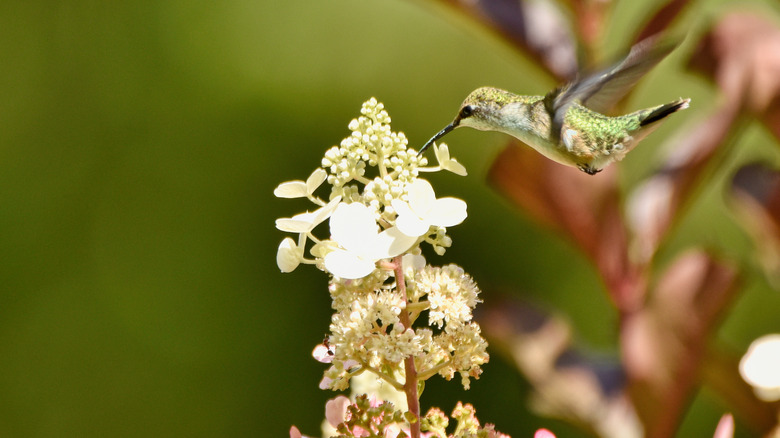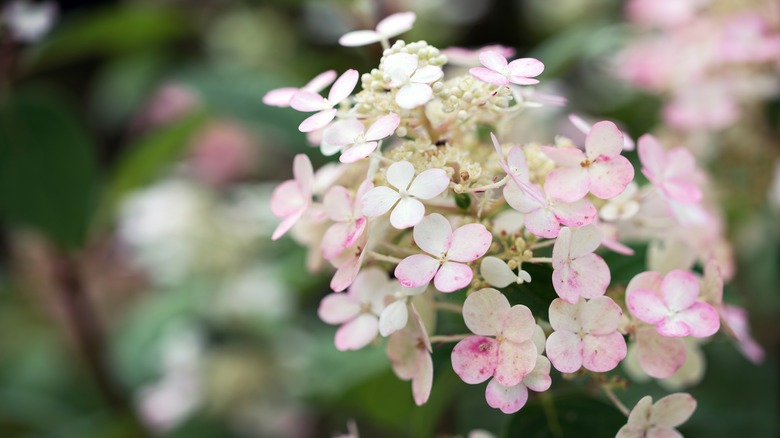Hummingbirds Love This Uncommon Hydrangea Variety, But It Has Downsides
A beautiful backyard landscape is even more picturesque when those beautiful blooms attract idyllic pollinators–colorful butterflies, buzzing bumblebees, and, of course, beautiful, delicate hummingbirds. While there are quite a few genius tips and tricks for attracting hummingbirds to your yard, if you're looking for certain flowers and shrubs to add to your landscape to do it naturally, you should consider planting a Quick Fire hydrangea.
This shrub grows up to 9 feet tall with gorgeous pink and white blooms and thrives in the fall as well, with leaves that turn golden to match the stunning fall foliage in your yard. The blooms of these flowers are not tightly packed together, making it easy for pollinators such as hummingbirds, butterflies, and bees to visit and feed on the nectar-rich florets. However, this flower can also attract aphids and mites like other hydrangea breeds and is also susceptible to some diseases such as bud blight, bacterial wilt, leaf spot, rust, and mildew. Fortunately, you can minimize these downsides with proper care.
How to avoid these Quick Fire hydrangea downsides
Quick Fire hydrangea shrubs thrive in a wide variety of zones across the United States; from zone 3 in the North to zone 8 in the South, these shrubs can withstand a variety of climates — except very hot ones, like Florida or the most southernmost parts of Texas and California. Besides needing a lot of sunlight (not enough sunlight is the reason why your Quick Fire hydrangea is not turning pink), the pruning process is important for keeping the plant healthy. During the early spring, before the shrub blooms, you'll want to trim it back by a third of the plant's total height as soon as the new growth begins to emerge on the plant's stems.
Pruning your hydrangea helps to remove any spent blooms the plant has, reduces the risk of those plant diseases, and ensures that the buds are full and thick to create that beautiful shape you desire, as well as the nectar that the hummingbirds are attracted to. As for the other critters attracted to the plant, such as aphids and mites, experts suggest handling the bugs with a strong spray of water to the plant. Thankfully, these disease and pest attractions tend to be very minimal, so this plant is not on any state or national invasive species lists, making it the perfect shrub to add to your gorgeous backyard landscape.


